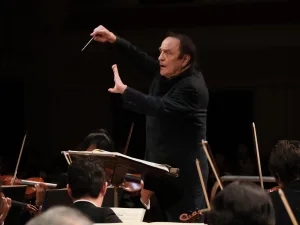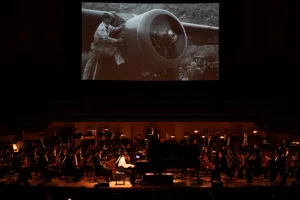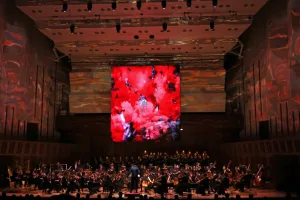Experience the Latest Interpretation of Sibelius by a British Orchestra
By Takuo Ikeda
It has been five years since the Philharmonia Orchestra toured Japan in January 2020, just as the world was on the verge of ‘shutting down’ due to the COVID-19 pandemic. The chief conductor has since changed, with Santtu-Matias Rouvali (b. 1985) succeeding Esa-Pekka Salonen. The Finnish conductor is 27 years younger than his predecessor. Rouvali, who has previously served as a guest conductor with the Tokyo Symphony Orchestra, made his debut in Japan as early as 2012. In 2017, he returned to Japan with the Tampere Philharmonic Orchestra from his home country, where he remains Honorary Conductor. During that visit, he performed Sibelius’ Symphony No. 5 at the Tokyo Bunka Kaikan, with an encore of “Valse Triste”—exactly the same repertoire he is presenting this time.
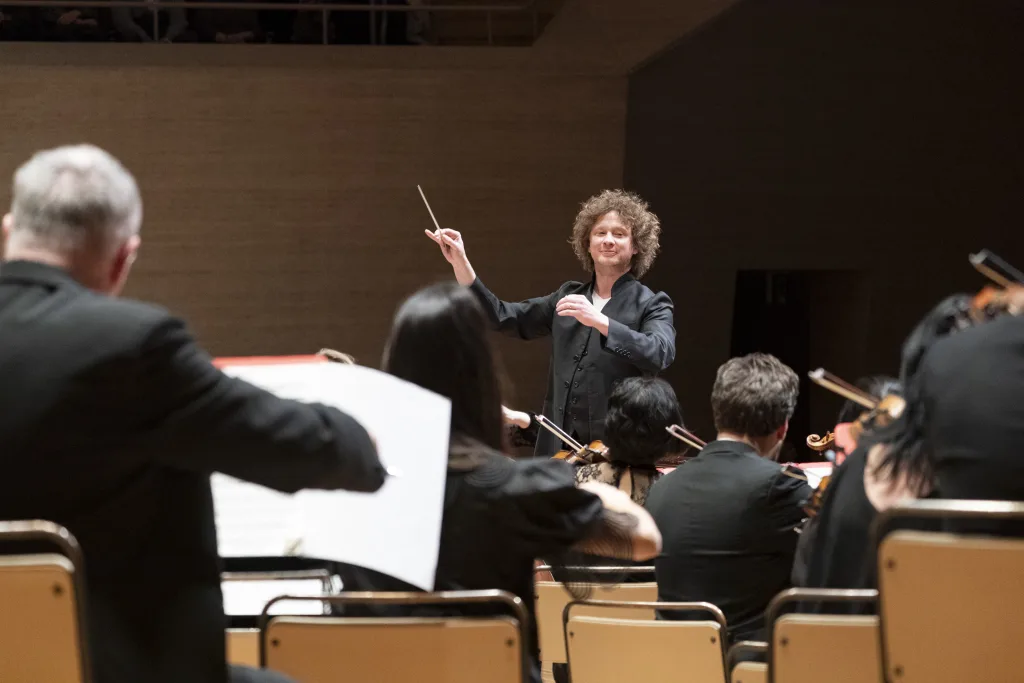
The UK, along with Japan, was one of the first countries outside Finland to recognize the true value of Sibelius, and the Philharmonia Orchestra’s performance was profoundly sympathetic. Rouvali allows the woodwind solos to soar as freely as possible while giving the string ensemble a dynamic sway, occasionally accented with the sharp precision of a percussionist. The conductor and the orchestra, who have worked together for five years, demonstrated a shared interpretative understanding. This was particularly evident in the second half of the second movement, which unfolded with unexpectedly rich emotional expression. In the third movement, the brass section played a pivotal role, delivering brighter-than-usual tones and driving the music to a grand climax in the coda. The conductor had clearly achieved a greater sense of scale compared to eight years earlier.
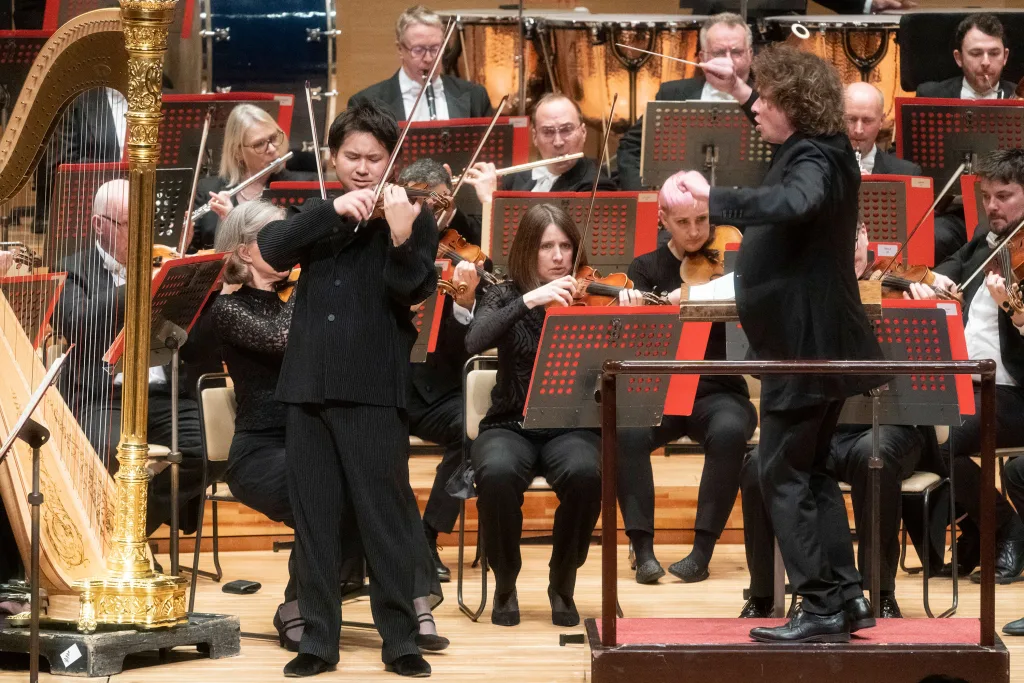
The first half featured two concertos. Bruch’s Scottish Fantasy, interspersed with Scottish melodies, has been a favorite of London orchestras since its recording by Jascha Heifetz. The Philharmonia Orchestra also made a masterful recording of the piece with Arthur Grumiaux in 1973, during its time as the “New Philharmonia.” On the other hand, the Philharmonia Orchestra’s 1948 monaural recording of Grieg’s concerto with Dinu Lipatti remains one of the finest. The author’s interest was focused on how these two pieces were interpreted by a young Japanese soloist of the 21st century in collaboration with the Philharmonia Orchestra, which proved to be an excellent match. In Bruch’s Scottish Fantasy, Fumiaki Miura brought out the lyricism of the piece with his highly transparent and beautiful tone, coupled with restrained yet expressive phrasing.
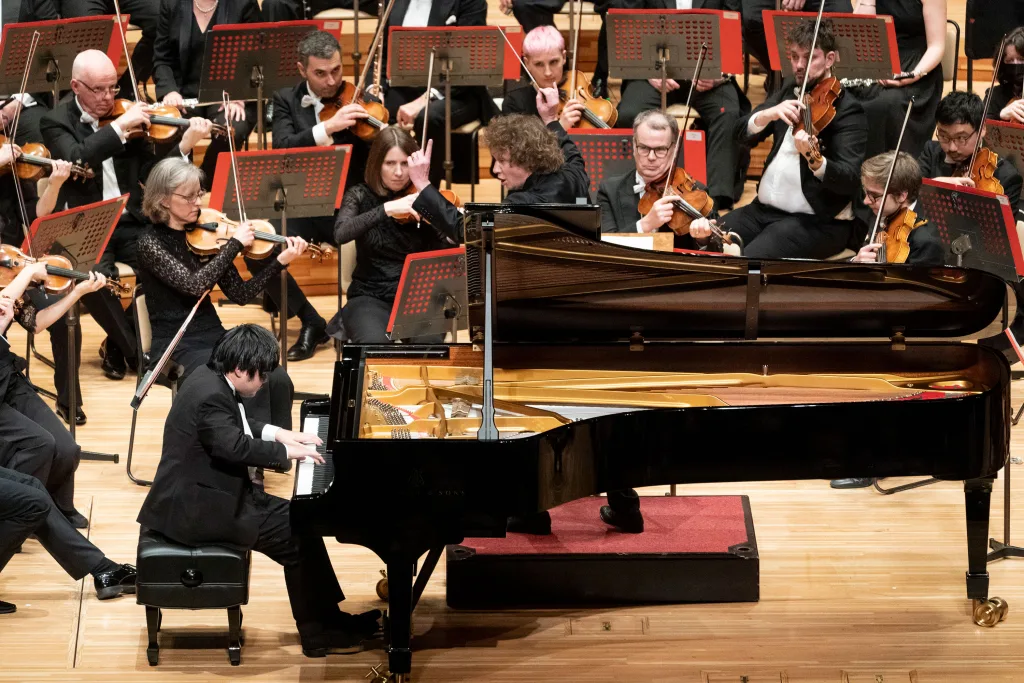
Nobuyuki Tsujii’s performance of Grieg’s Piano Concerto showcased certain virtues, such as a Mozart-like delicacy in the second theme of the first movement. However, he lagged slightly behind the orchestra in achieving a variety of tonal changes. I hope that both the soloist and the orchestra will further refine their artistry to fully convey the depth of this masterpiece among masterpieces.
Performance Data
Philharmonia Orchestra Japan Tour
January 20th (Mon) 19:00 Suntory Hall
Conductor: Santtu-Matias Rouvali
Violin: Fumiaki Miura
Harp:Heidi Krutzen
Piano: Nobuyuki Tsujii
Philharmonia Orchestra
Program
Bruch: Scottish Fantasy, Op. 46
Grieg: Piano Concerto in E minor, Op. 16
Sibelius: Symphony No. 5 in E flat major, Op. 82
